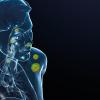A team of US researchers have developed a new method using nanopores — nanometre-sized holes — to help scientists advance their discoveries in neuroscience and other medical applications.

For context – a single sheet of paper is about 100,000 nanometres thick.
Professor Li-Qun Gu said: “Potential applications include studying the structures of DNA- and RNA-based diseases and disorders, such as COVID-19, HIV and certain types of cancers, to see how drug therapies work.”
The technique involves aptamers, or single strands of DNA or RNA molecules that selectively bind to a specific target. This allows researchers to know exactly what they are detecting with the nanopores and study how individual molecules are interacting with each other.
Image Credit | iStock




